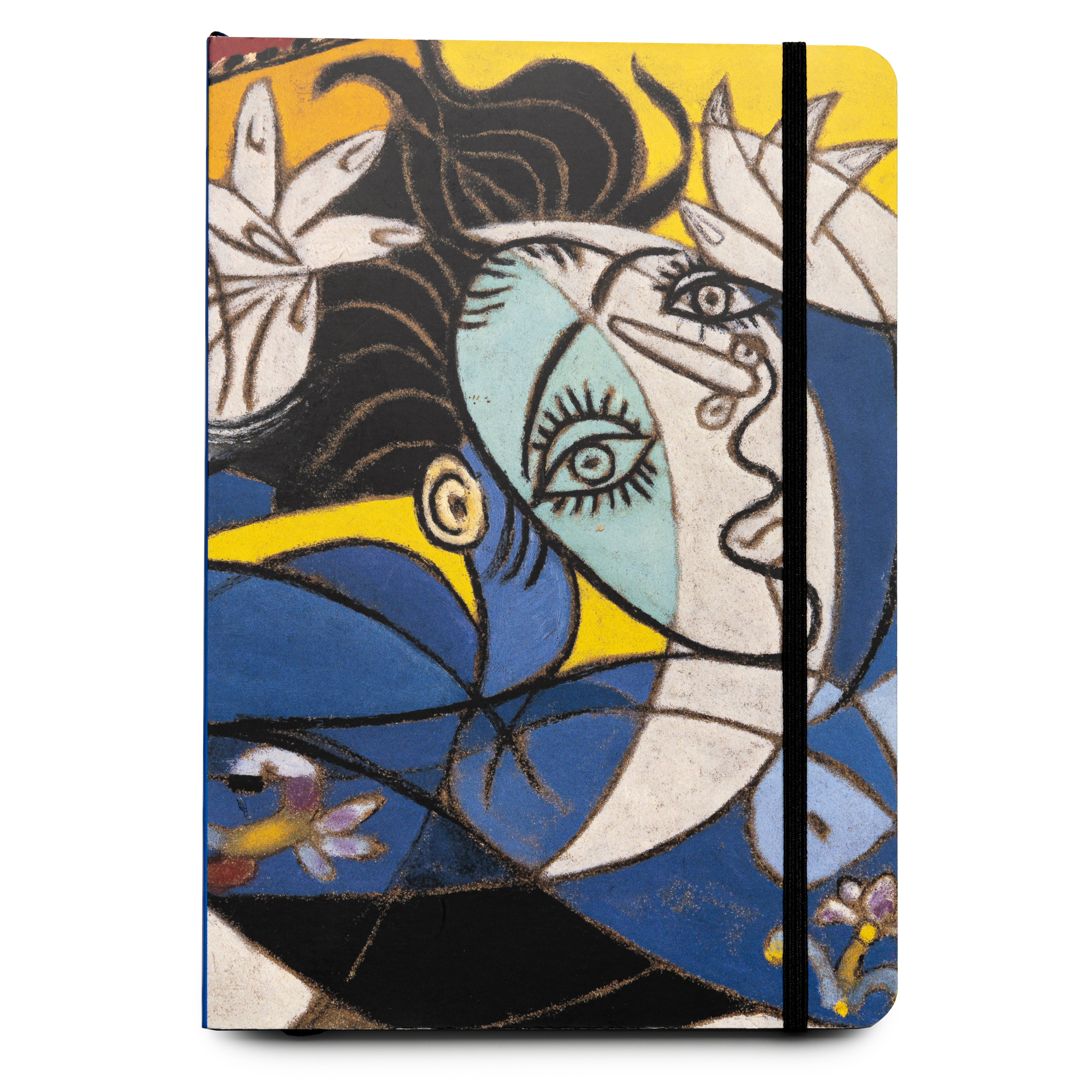01/01/202004/02/2024
Dialogues with Picasso
Collection 2020-2023
Jacqueline Seated [detail]. París, 8 October 1954. Museo Picasso Málaga. Gift of Christine Ruiz-Picasso. MPM1.9
By periodically refreshing, and thus revising, its permanent collection, Museo Picasso Málaga is in a way following in the footsteps of Picasso himself, who innovated constantly with his art throughout his life. With its thematic and chronological layout, this new exhibition narrative in the Palacio de Buenavista will enable visitors to acquire a deeper knowledge of Pablo Picasso’s artistic career by grouping his works together in a way that helps them to understand his artistic processes. This is the sixth transformation of the exhibition rooms of the Palacio de Buenavista since the museum first opened in 2003, thanks to the negotiations that took place to ratify the agreement between the Consejería de Cultura y Patrimonio de la Junta de Andalucía and Fundación Almine y Bernard Ruiz-Picasso (FABA), which has been renewed for three more years, during which time a total of 162 works by Picasso will be added to the 233 works MPM holds in its own collection.
The new layout of the exhibition rooms owes its unique features to an innovative scenographic layout in the museum spaces. There are 44 paintings, 49 drawings, 40 graphic works, 10 sculptures, 17 ceramics, 1 tapestry and 1 linocut plate. With the 233 works belonging to Museo Picasso Málaga and these 162 from Fundación Almine y Bernard Ruiz-Picasso (FABA), the collection will hold almost four hundred works by Pablo Picasso, dating from between 1894 and 1972, of which 120 will be on display in the Palacio de Buenavista. These works build a story that begins with Picasso’s formative years and continues through the most representative periods of the artist’s career.
For the exhibition presentation associate curator Pepe Karmel, who devised the exhibition concept, explained his point of view as follows: "The challenge in displaying the work of Pablo Picasso is to do justice to his astonishing diversity while also demonstrating the unity and coherence of his work. In just a few years, Picasso travelled from the drama and tenderness of the Blue and Rose Periods to the cerebral experiment of cubism. After the First World War, he invented a new, modern form of classicism. In the 1920s and ‘30s, he went back and forth among cubism, classicism and surrealism. After World War II, he invented new styles for which art historians have still not found names. He is best known as a painter but was also the greatest sculptor of the twentieth century. And the greatest printmaker To help the visitor to get to know Picasso, Karmel came up with the idea of displaying his work "in small groups of related pictures and sculptures. Each group is focused on a traditional subject such as the human body, the portrait, or the still life. One room is a “bestiary,” with paintings and sculptures of bulls, birds, and cats. There is also a rich selection of his narrative drawings, some illustrating Aristophanes’ bawdy comedy Lysistrata, others recounting the myth of the Minotaur.”
The new layout begins on the ground floor, introducing the visitor to the artist himself through photographs and biographical texts, then moves on to a series of Women and Men, with portraits dating from 1894 to 1906, then another on Cubism: bodies, with works from 1906 to 1914. Then Cubism: still lives, with works from 1911 to 1922, is shown in the same room as the selection Modern Classicism, dating from 1922-1923. The tour continues through Models, Bathers and Defiant Women, with works from 1927 to 1933. On the upper floor of the gallery, the exhibition continues with Metamorphosis and Abstraction, from the 1927-1932 period; the section The Minotaur and Other Monsters, which contains a selection of works from 1928 to 1938; and Relentless Gazes, with portraits painted between 1934 and 1939. The Anatomy of Terror, with works dating from 1936 to 1948, and The Face of War, the Face of Peace, from 1944 to 1950, contain works from that convulsive period. Next, we move on to the Bestiary, with depictions of animals dating from 1941 to 1960, and the Carnal Landscapes of 1944 to 1971. With Picasso by now settled in the South of France, Return to the Mediterranean brings together works from 1948 to 1960, and leads to the room containing Familiar Gazes, portraits painted between 1962 and 1965, before ending with The Wise Child, with works from 1970 to 1972 - just a year before he died.
The Exhibition

Gallery II

Gallery III

Gallery VIII

Gallery XI
Related Activities

18November 19, 2021
Guernica.The Survival of a Myth

Wednesday, 16 December, 2020
DIRTYING AND CLEANING UP THE CITY
Lectures

December 10, 2020
THE POWER OF SMELL AND THE CHEF’S SENSE OF TASTE

December 9, 2020
MIQUEL BARCELÓ. ÁFRICA FANTASMAL

December 2, 2020
Masks and theater

November 24, 2020
MÁLAGA GALLERY WEEKEND

November 20, 2020
PARADISE IN FLAMES

November 19, 2020
A DIFFERENT WAY TO READ. ILLUSTRATED BOOKS.

November 18, 2020
HOW DO YOU DIRECT AN ORCHESTRA?

November 17, 2020
WHAT PICASSO SAID AND WE DIDN’T KNOW

November 11, 2020
THE BEAUTY OF MATHEMATICS

November 10, 2020
POTTERY. A DEMOCRATIC ART?

November 4, 2020
A DANDY LOST IN THE 21ST CENTURY

October 21, 2020
MÁLAGA. A DESIGNED CITY?

August 8, 2020
Kiko Peña and Ángel Doblado

Saturday, 8 August, 2020
Peter and the Wolf
Families and Kids

August 1, 2020
Jorge Pardo

July 31, 2020
Brox&Pino Dúo

July 24, 2020
Nacho Loring Trío

July 18, 2020
Alba Molina

July 17, 2020
Trío Mainake

July 11, 2020
Virginia Gámez

July 10, 2020
Arturo Serra Trio

July 4, 2020
Claudio Constantini

July 3, 2020
Ernesto Aurignac Quartet

June 27, 2020
Javier Perianes

April 2, 2020










